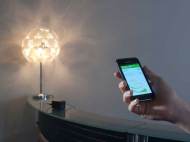Wireless power outlets for smarter smart homes
 As you probably remember from shows that depict the future, we strive to possibility to live in smart homes. A step further toward that goal was achieved by a group of researchers from Fraunhofer Institute, who developed a new Internet-enabled wireless power outlet that support the new IPv6 Internet protocol. The wireless smart socket allows users to control household appliances via their PC, tablet, or a smartphone.
As you probably remember from shows that depict the future, we strive to possibility to live in smart homes. A step further toward that goal was achieved by a group of researchers from Fraunhofer Institute, who developed a new Internet-enabled wireless power outlet that support the new IPv6 Internet protocol. The wireless smart socket allows users to control household appliances via their PC, tablet, or a smartphone.
The smart socket was developed in a collaborative effort between the researchers at the Fraunhofer Institute for Communication Systems (Fraunhofer ESK) in Munich in collaboration with the Fraunhofer Institute for Industrial Mathematics (Fraunhofer ITWM) in Kaiserslautern, and the industrial support provided by GmbH.
“We have been able to connect the power outlets wirelessly using the IPv6 protocol”, said Günter Hildebrandt, Fraunhofer ESK research engineer. “All household appliances plugged in one of the sockets can be switched on and off remotely using an IPv6-compatible device such as a smartphone or laptop PC – from anywhere.”
As you might start thinking about enabling access to devices in your home could pose a security threat, but the researchers claim the security of the system can be guaranteed. Wireless control signals are transmitted in the 868-MHz frequency band, and all information is transmitted in encrypted form with the AES-128 advanced encryption standard.
The wireless power outlets are a component of the HexaBus home automation system that was developed by the Fraunhofer ITWM as part of the mySmartGrid project. HexaBus system employs a specially designed USB stick that plugs into any compatible, off-the-shelf router. The user enters the command to switch on an appliance via a standard web browser or a smartphone app.
Because the HexaBus system is based on the IPv6 data communication protocol, a separate IP address is assigned to each power outlet, and thereby to each connected appliance, enabling them to be accessed directly. Aside being used to forward the data to the power outlet, the USB stick can be used to receive information from the wireless power outlets, thus enabling homeowners to monitor and optimize their power consumption.
The system functions by a protocol software developed by Fraunhofer ESK researchers. Hildebrandt and his team developed special protocol software and an extension for the open-source operating system for networked embedded devices named Contiki. Contiki operating system enables communication in a suitable 6LoWpan (IPv6 over Low power Wireless Personal Area Network) communication protocol. This permits users to remotely control a widely distributed network of appliances.
“The HexaBus components make the smart home of the future a reality. They enable household appliances to be controlled intelligently, thus optimizing or reducing electricity consumption. For example, the householder can start the washing machine during cheap-rate off-peak hours, or run the dishwasher when the photovoltaic panels on the roof are generating sufficient power”, said Mathias Dalheimer, industrial engineer of the Fraunhofer ITWM, who leads the SmartGrid project and is its chief programmer.
Current system enables a 30 meters (nearly 100 feet) distance between the power outlet and the router can be as high as 30 meters. The researchers plan to improve this with multihop networking capability that would allow linking of these power outlets in series, thus enabling the router to pass messages from one to another and extending the range of the communication system – a solution that could be of interest to businesses for their office buildings and industrial sites.
The HexaBus power outlets are ready for commercial application. Their manufacture has been entrusted to embedded brains GmbH, the industrial partner that was also responsible for the hardware development of the power outlets and USB sticks.









Good now how much is it and where can I find it. I doubt that there is not such a thing today. I know that it is hiding somewhere in this world and someone isn’t releasing it publicly for some dumb reason. I’ve been trying to search one wireless POWER OUTLET that lets me plug my device in a wireless power outlet that maybe runs on battery or something but turns out nobody “invented” that yet.
Here you go Unknown: http://www.belkin.com/us/wemo-switch